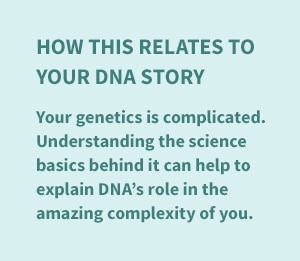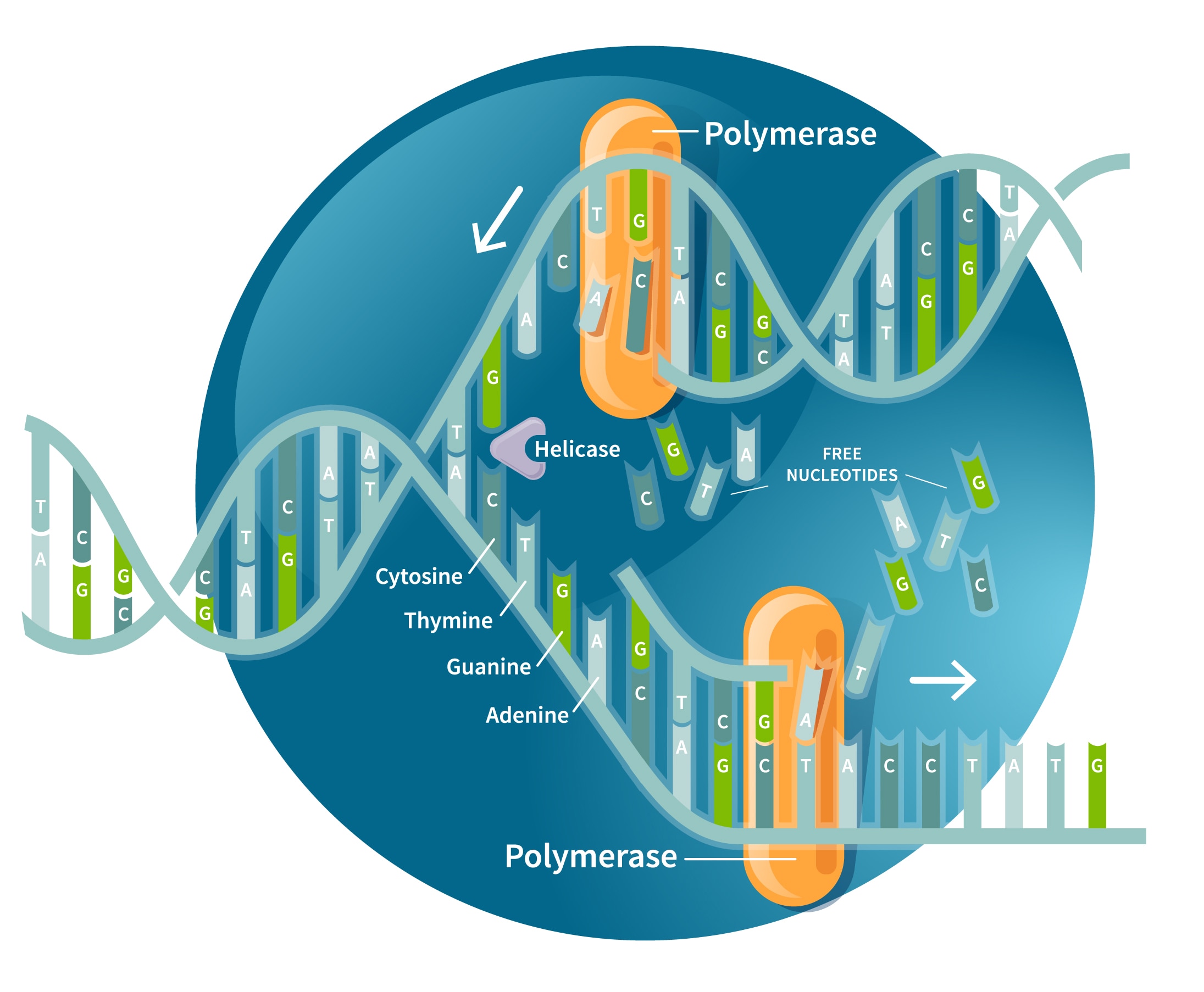What Is DNA Replication?

DNA replication is part of a cell’s life cycle. When your cells divide they need to create an exact copy of their genetic material for the new cell. The specific steps for DNA replication are included in the DNA itself.
To do this duplication, your cells rely on the nucleotides that make up your DNA molecule, along with some helper molecules like DNA polymerase and DNA helicase. Nucleotides in your DNA are composed of:
- A phosphate group
- A five-carbon sugar
- One of four nitrogenous bases—adenine, thymine, cytosine, and guanine—often shortened to A, T, C, and G
The DNA replication process starts with the DNA in its double-stranded form—pairs of nucleotides bound together forming a twisted ladder-like structure called a double helix.

How Does DNA Replication Work?
The replication process is initiated when the bonds between the nucleotide base pairs of the double helix are broken by a DNA helicase. This allows the double-stranded DNA structure to unwind and unzip, forming a little pocket where the two strands of DNA are separated. This pocket is called a replication fork, with each of the fork’s two separated DNA strands serving as a template for the replication process. One strand is called the leading strand and the other one is referred to as the lagging strand.
The duplication process then moves forward with the help of an enzyme called DNA polymerase. DNA polymerase bonds each nucleotide base to a new partner—A with T, and C with G—to synthesize a new strand of DNA. This specific bonding pattern of the base pairs results in two copies of the DNA molecule being created from the original version.
How Are Replication Errors and Mutations Prevented?
While each nucleotide has a specific binding pattern to form nucleotide pairs, on occasion, DNA polymerase will accidentally match the wrong ones together, add too many nucleotides, or miss adding a nucleotide. For example, it could bond an A with a C instead of a T. This is a problem, as these kinds of errors can result in a mutation. This mutation could impact the maintenance and repair of your cell’s life cycle. It might also be passed down to the next generation.
To avoid this, DNA polymerase “proofreads” and stops replicating if it detects an error. Once other molecules fix the mistake, DNA polymerase can resume and continue until the DNA replication process is complete. This proofreading activity is so effective that, on average, only one mutation occurs for every 100 million bases.
Why Does DNA Replicate?
DNA replication plays an important role in the growth and renewal of cells. Growing organisms are constantly creating new cells as they develop into a larger body. These new cells need accurate copies of DNA to do their job. Additionally, over time, some cells can become damaged, grow old, or die. To keep your body functioning properly, it's important that these cells are quickly replaced with new ones that carry the genetic instructions to do their work.
Cells accomplish this renewal and growth through the process of cell division, in which one cell splits in half to form two new cells. In order for a cell to divide, it must first make a copy of its entire genome, which is all of the DNA it needs to function properly. It is very important that your DNA is replicated accurately, with new cells receiving an exact copy of your genetic sequence.
How Was the DNA Replication Process Discovered?
For many years, scientists were unsure how a cell replicated or synthesized its DNA. Three competing theories were proposed.
- The conservative model posited that the original DNA double helix remained completely intact. The new copy did not borrow any molecules from the original.
- The semiconservative model suggested that DNA unwound during replication, with each strand serving as a template for synthesis of a new DNA strand.
- In the dispersive model, the original double helix was believed to be broken into many small pieces, with some of these pieces ending up within each new strand.
The debate was finally resolved in 1958 by two scientists named Matthew Meselson and Franklin Stahl. In a now-famous biology experiment, they grew bacteria inside a special solution to label all of the cells' DNA with a marker. They then used a different marker to label only the DNA that was newly synthesized. They discovered that replicated DNA always contained one strand from the original DNA molecule and one strand that was newly formed. This proved that the semiconservative model of DNA replication was correct.
Reference
Meselson, Matthew and Franklin W. Stahl. "The Replication of DNA in Escherichia Coli." Proceedings of the National Academy of Sciences of the United States of America. July 15, 1958. https://www.pnas.org/doi/10.1073/pnas.44.7.671